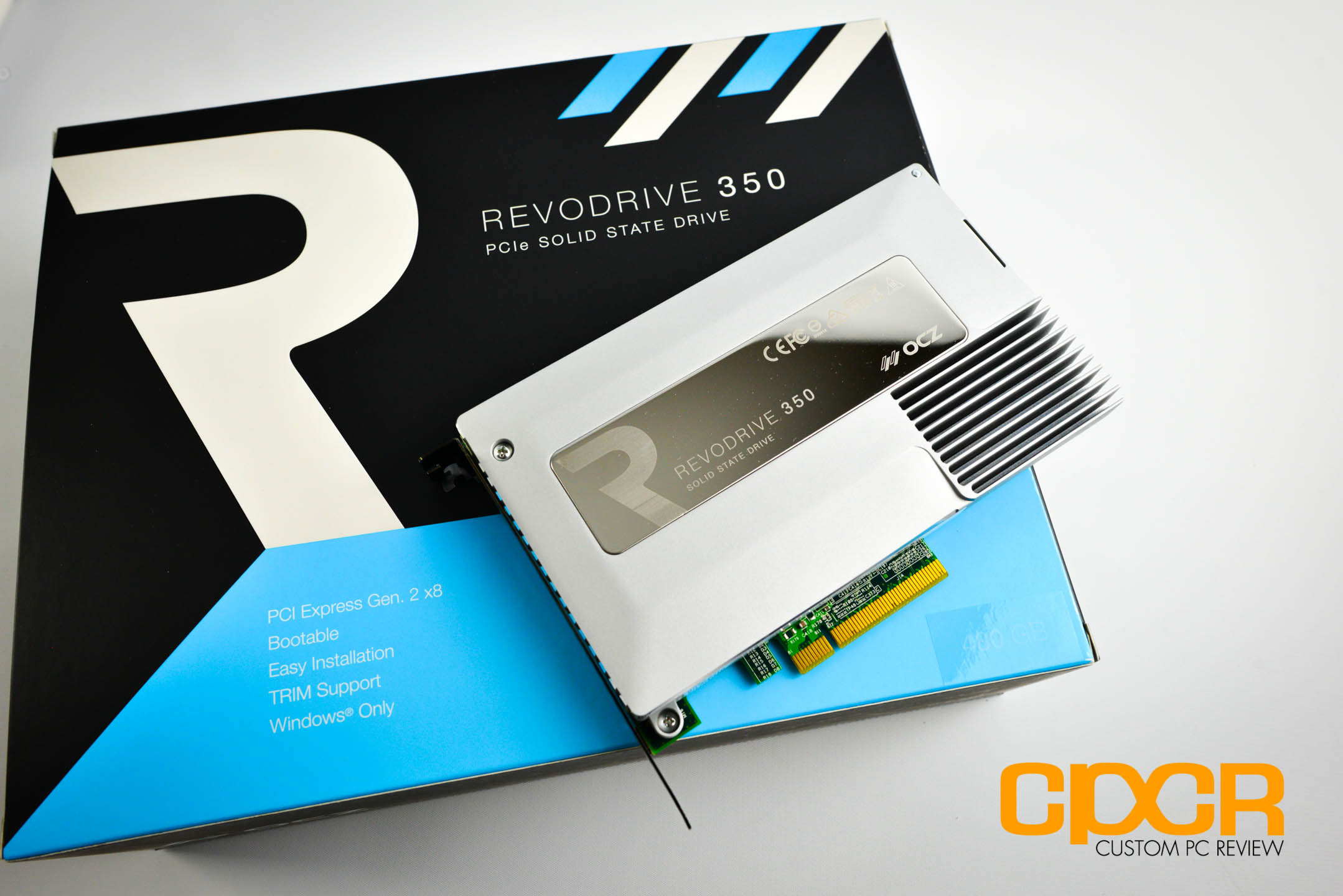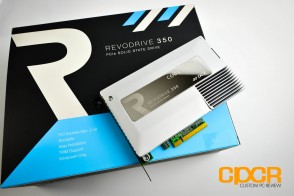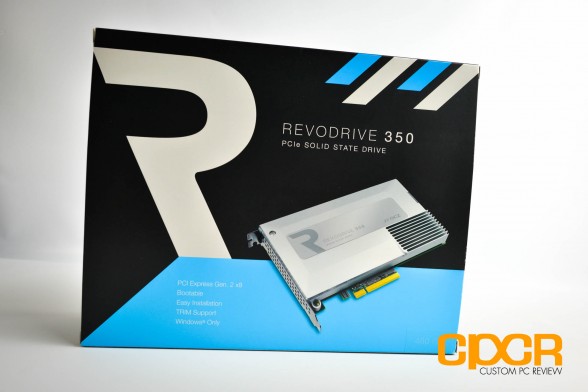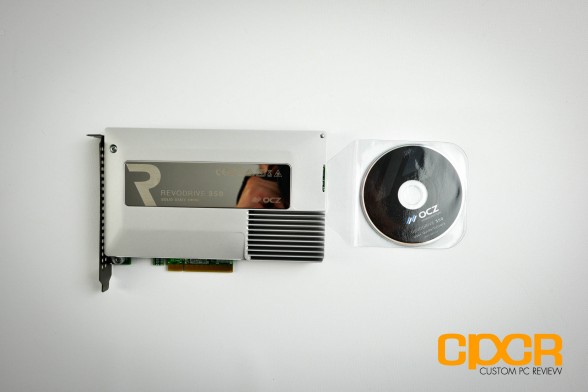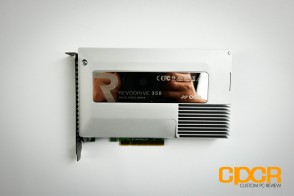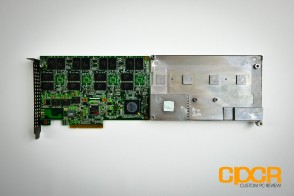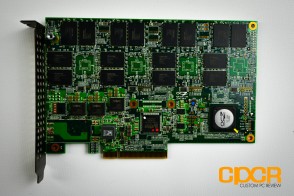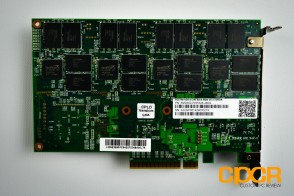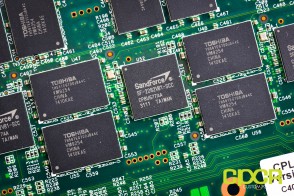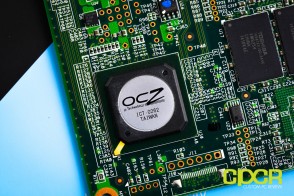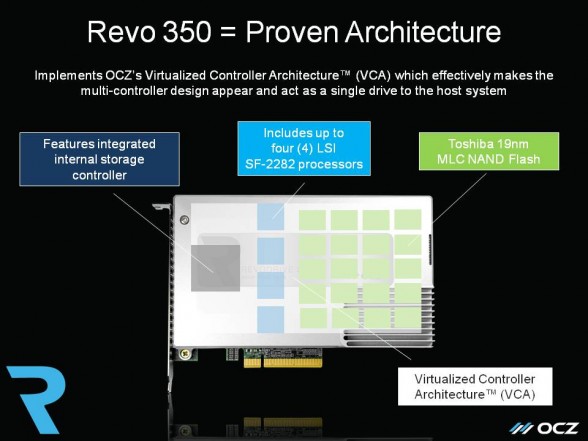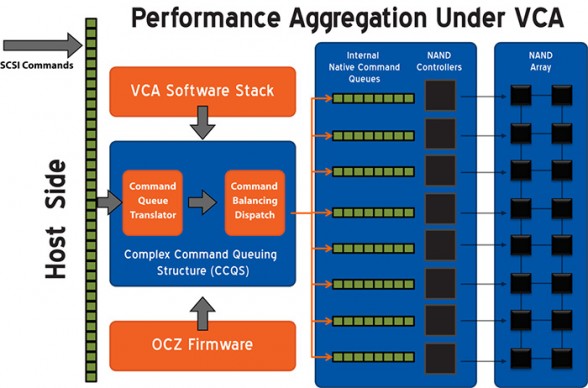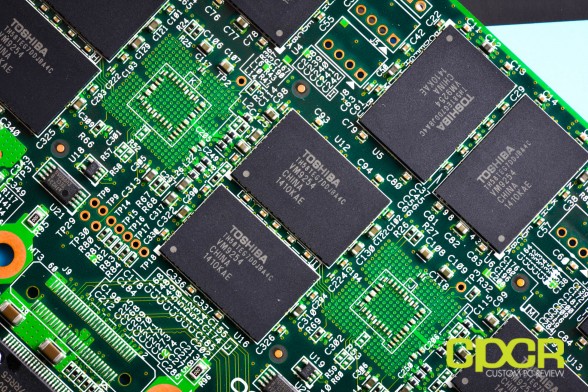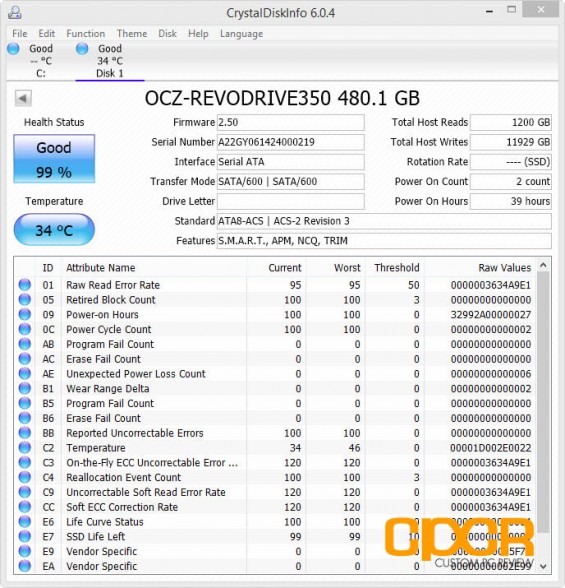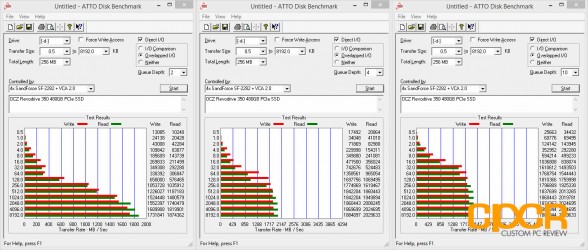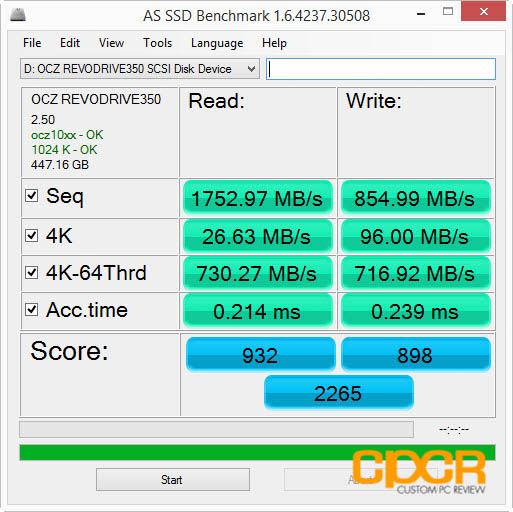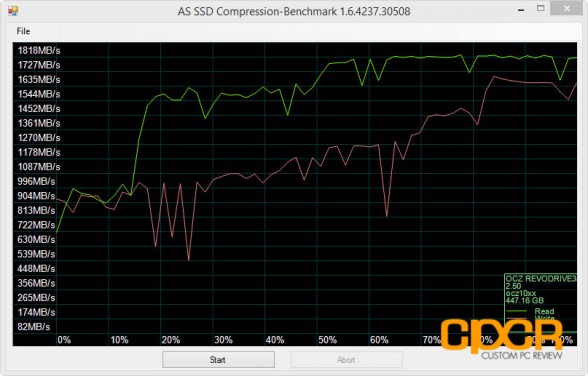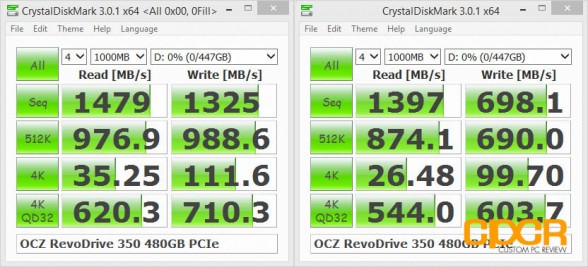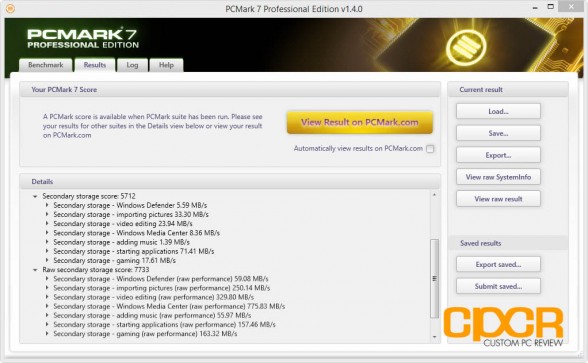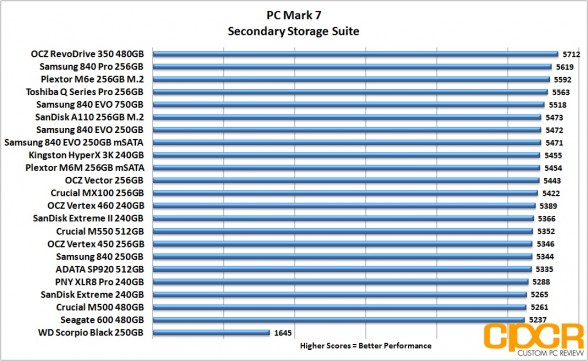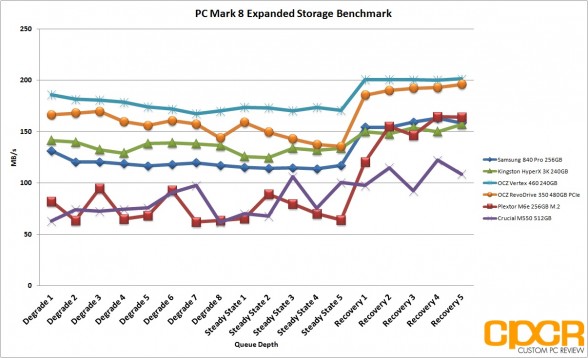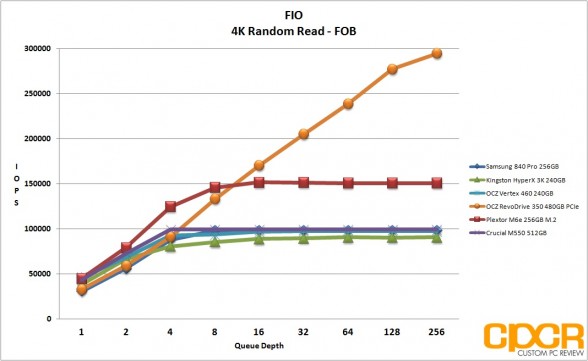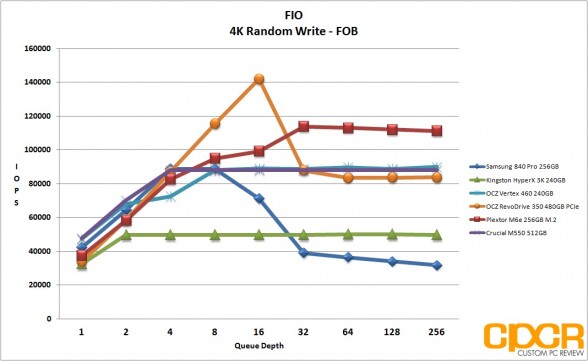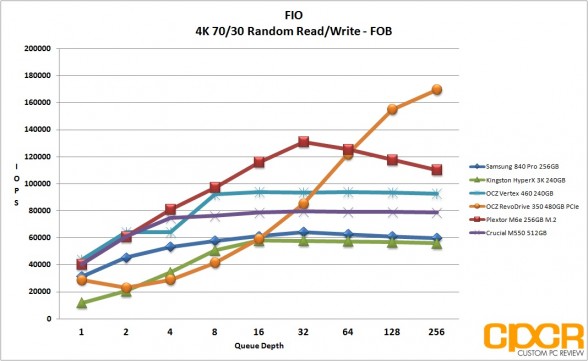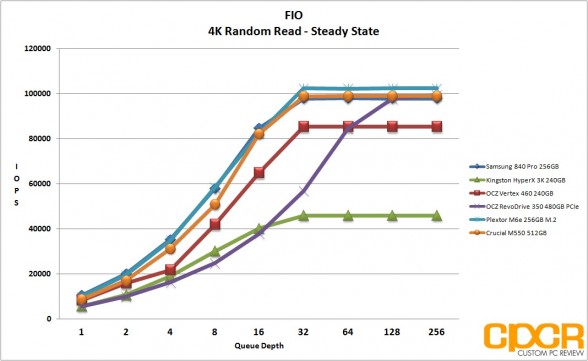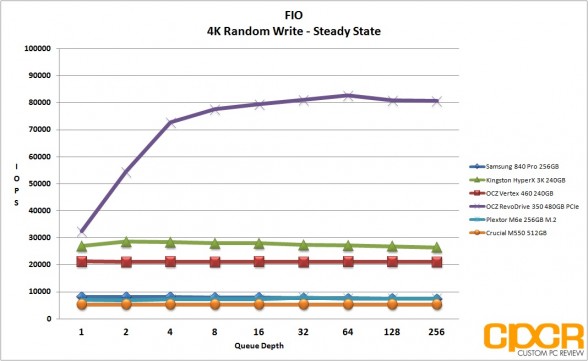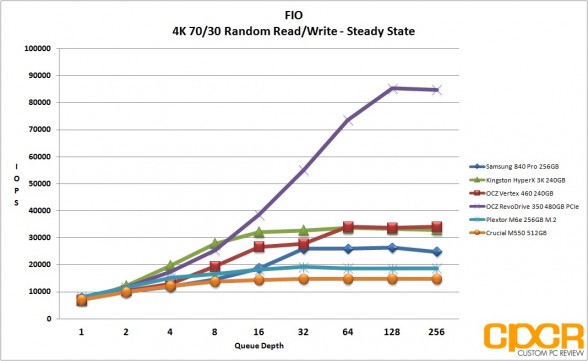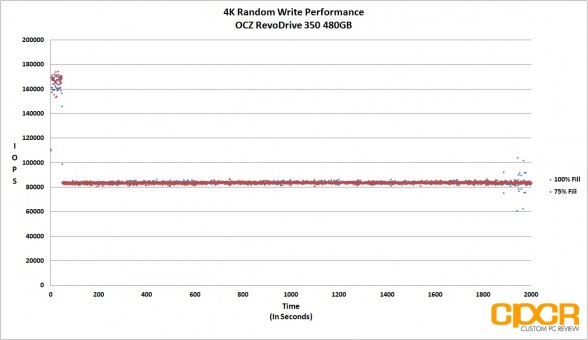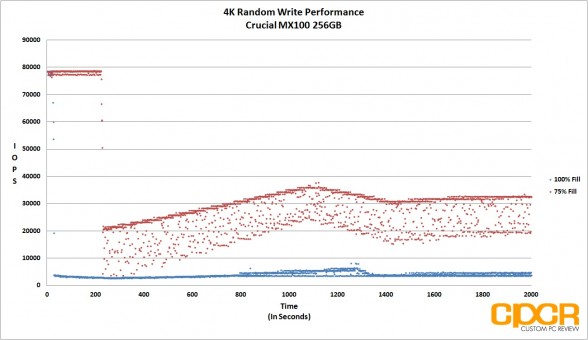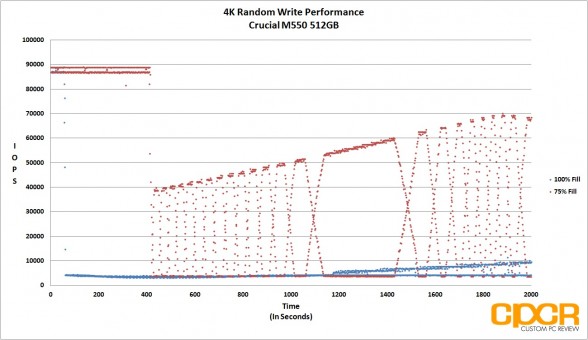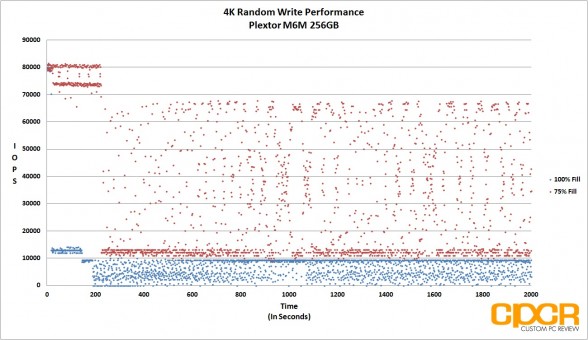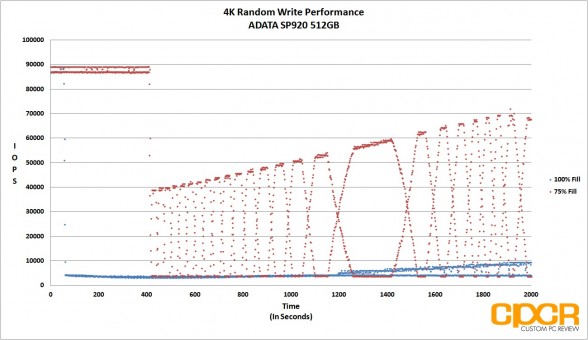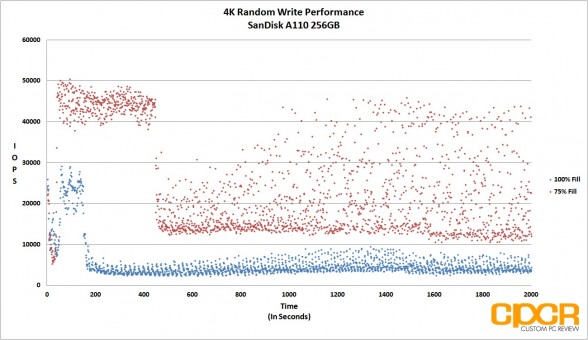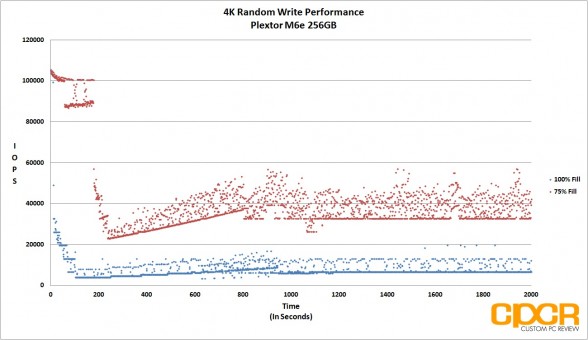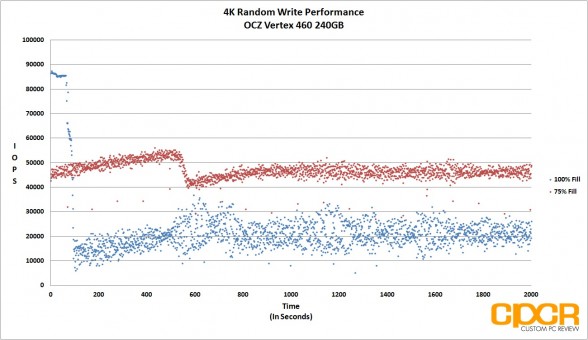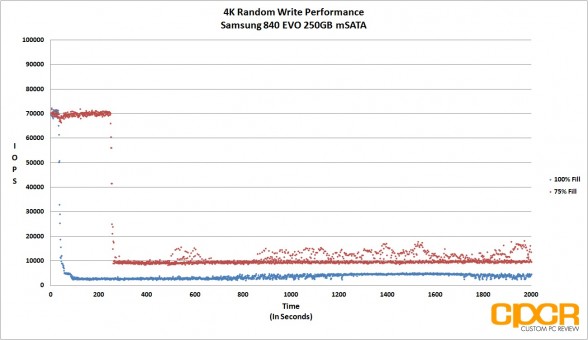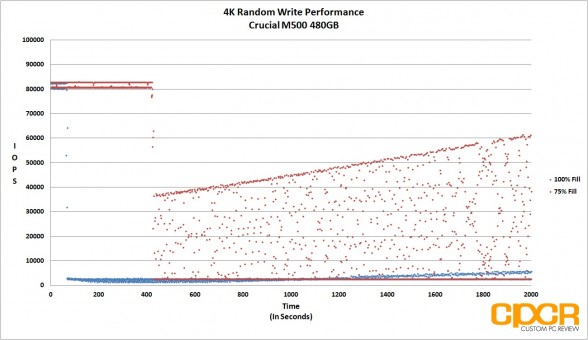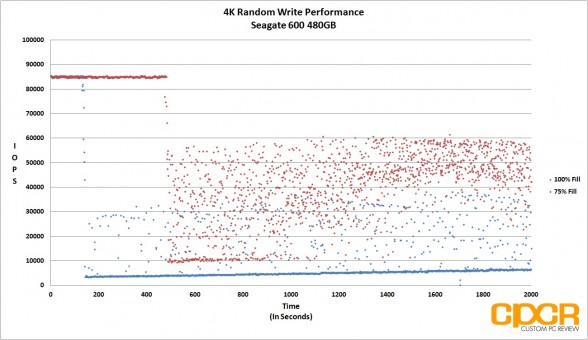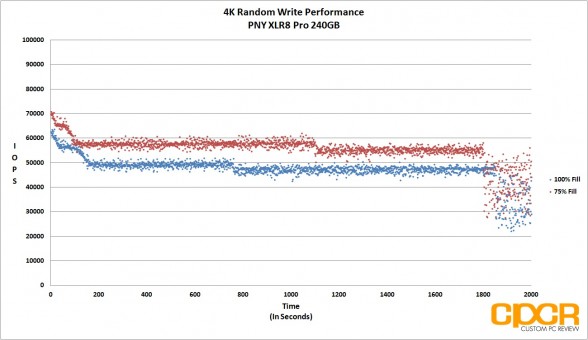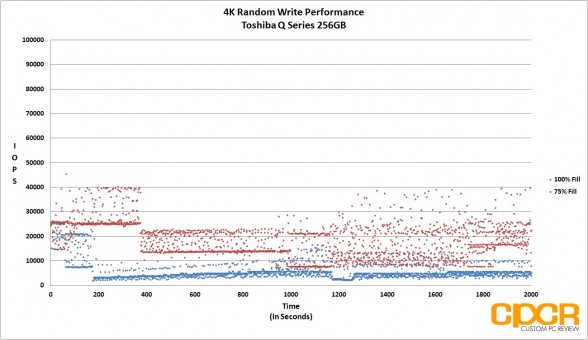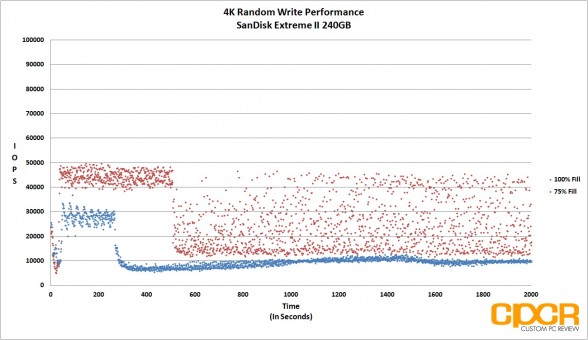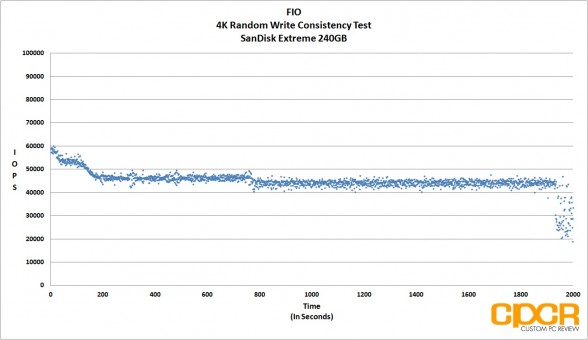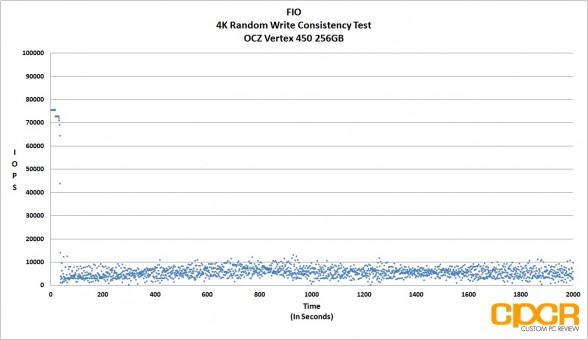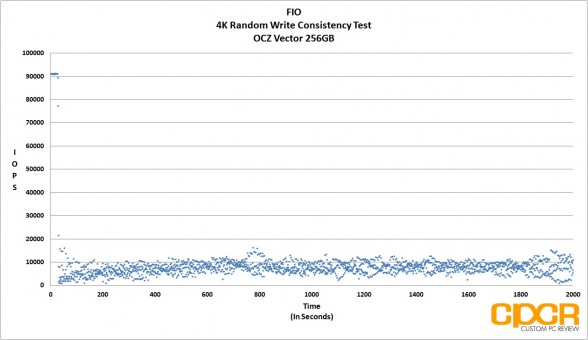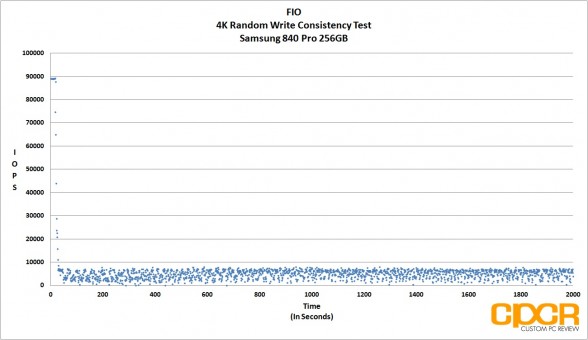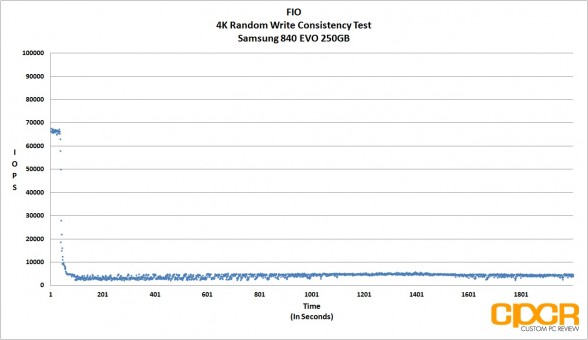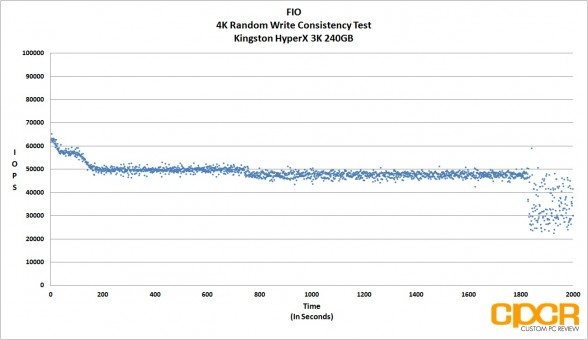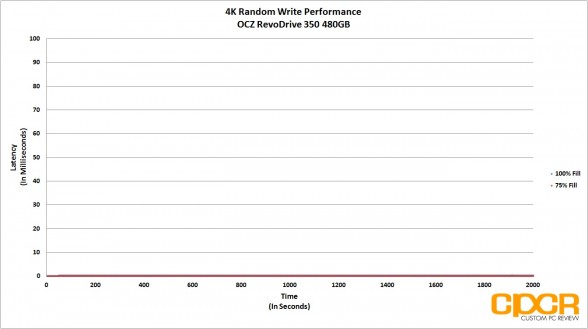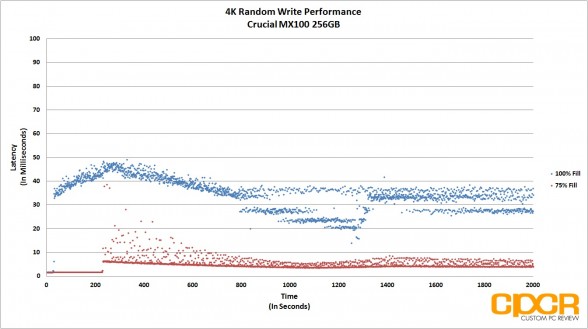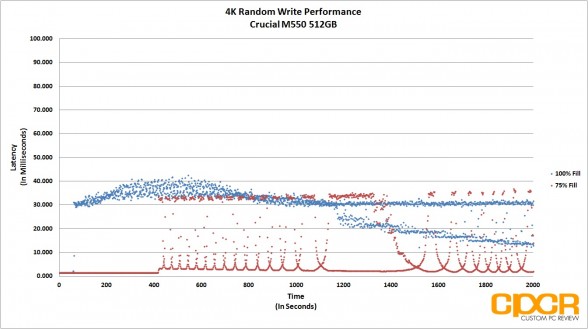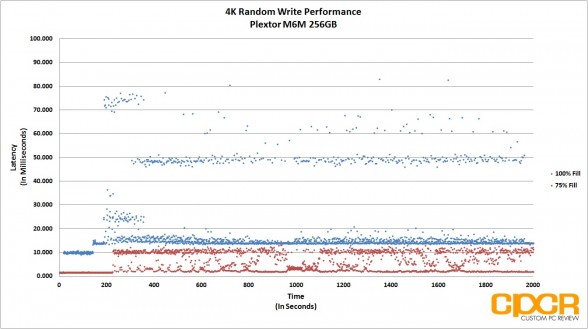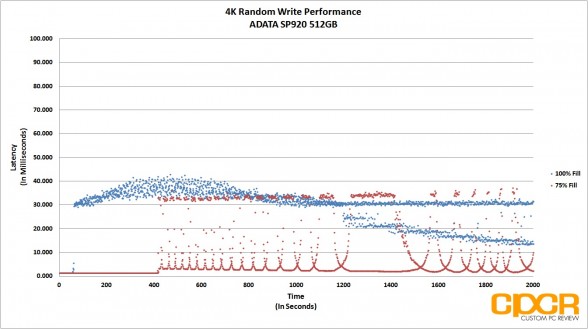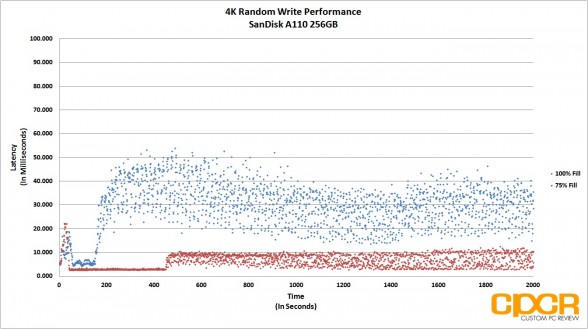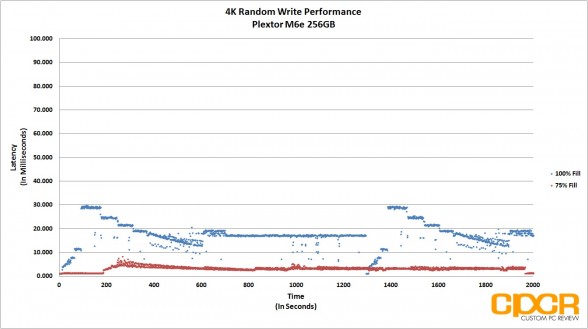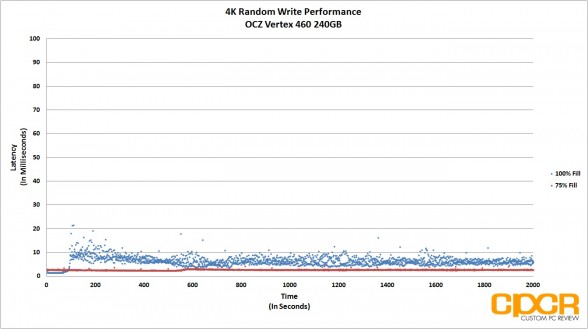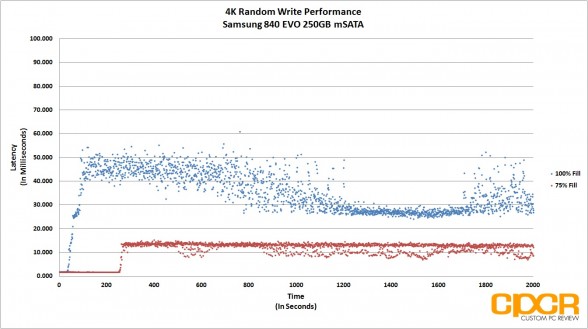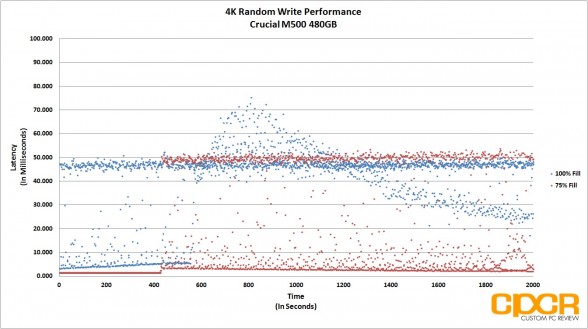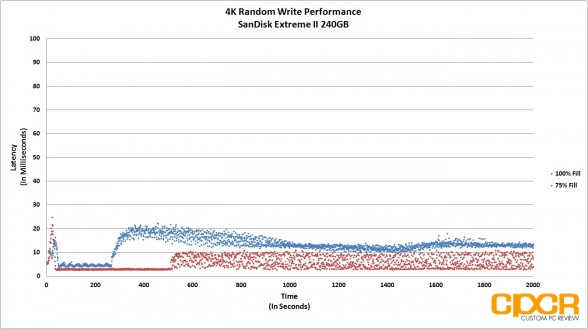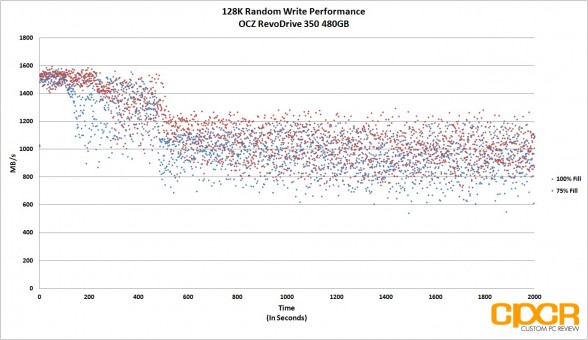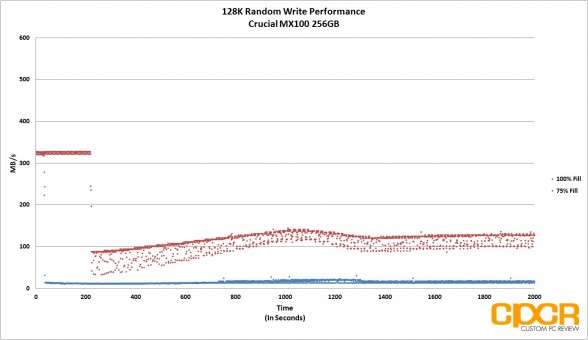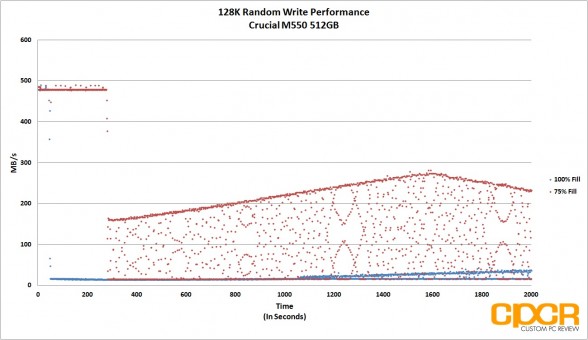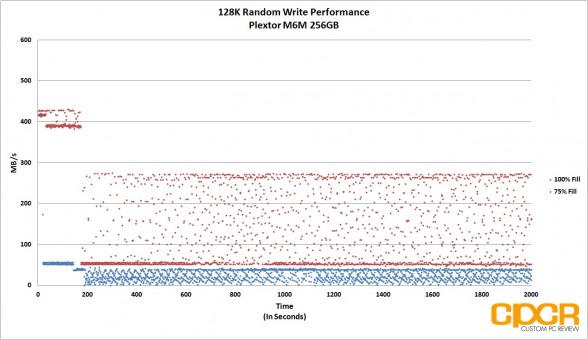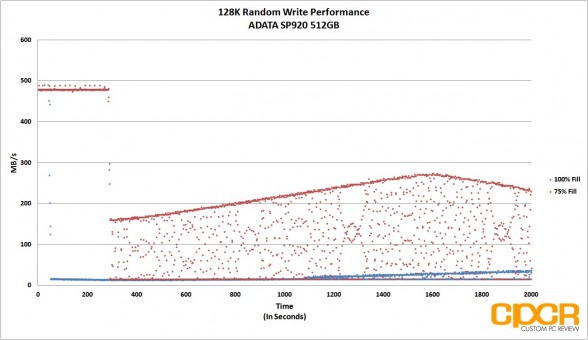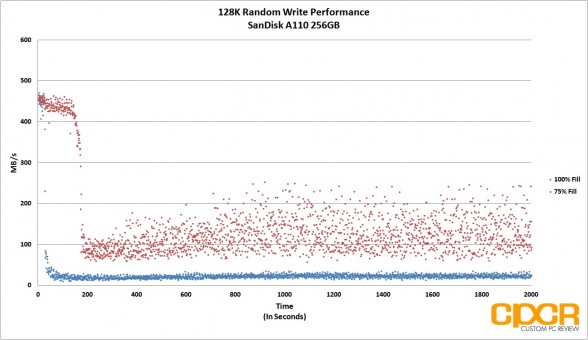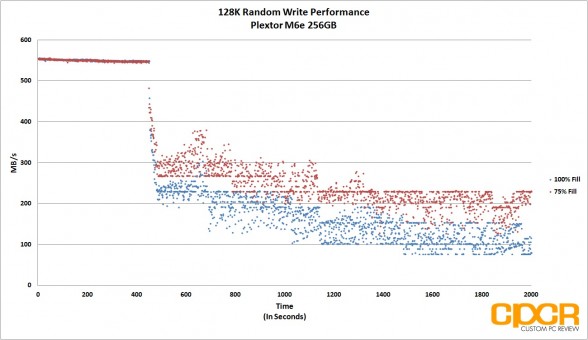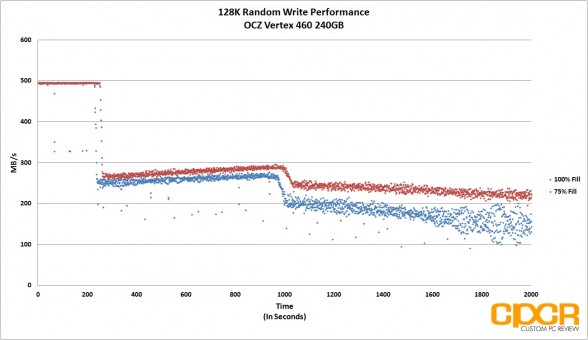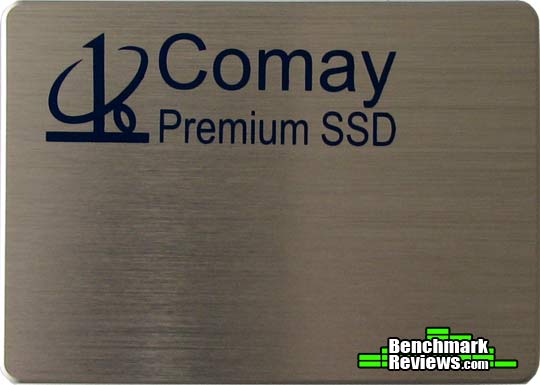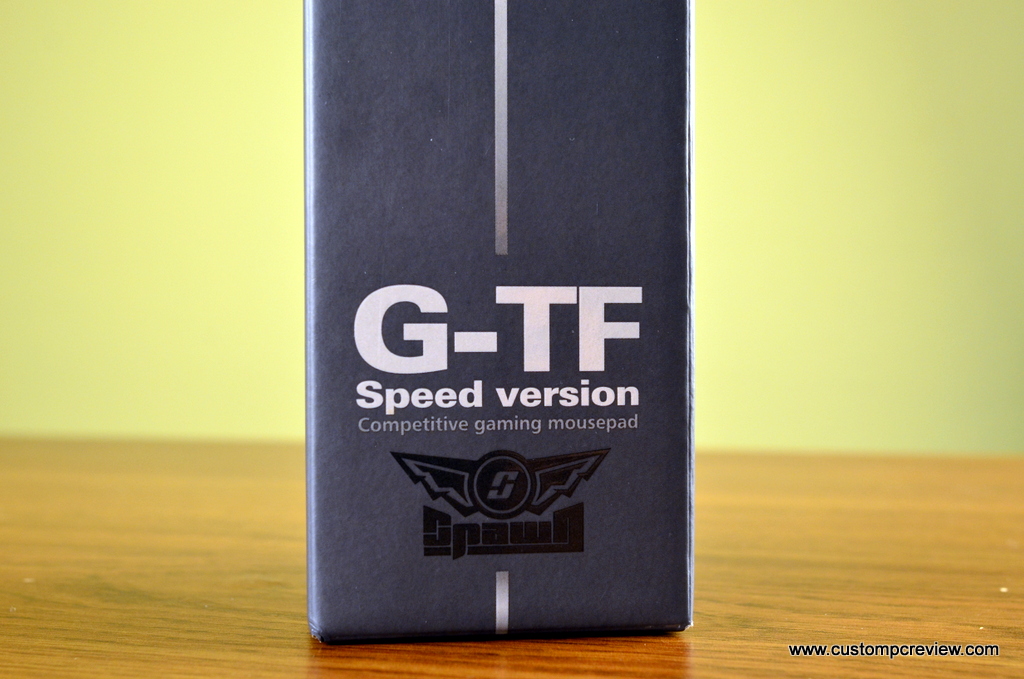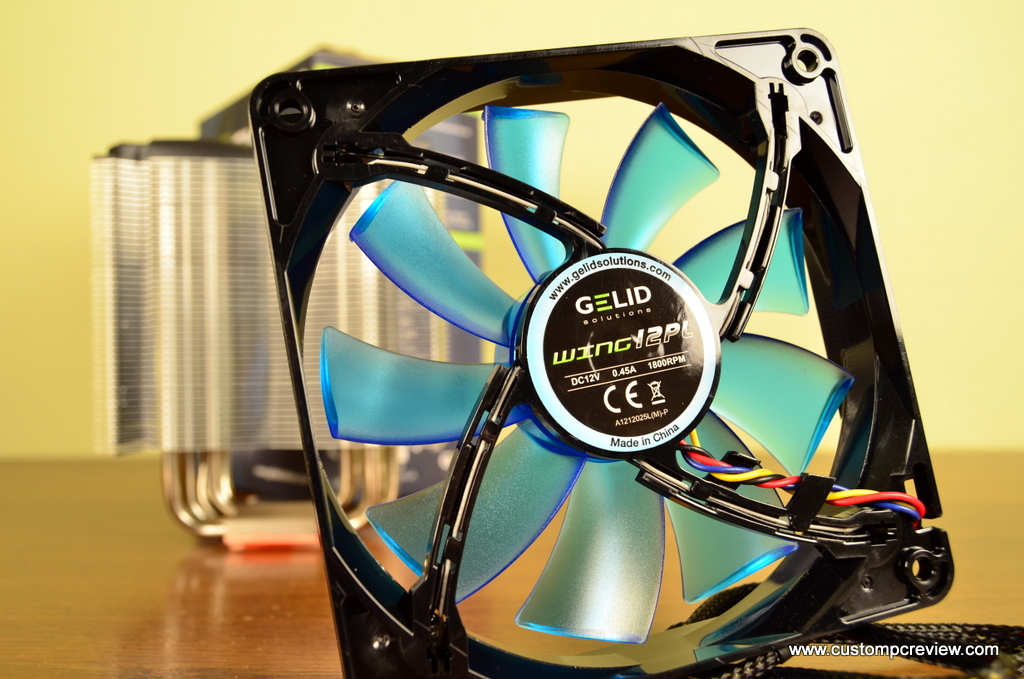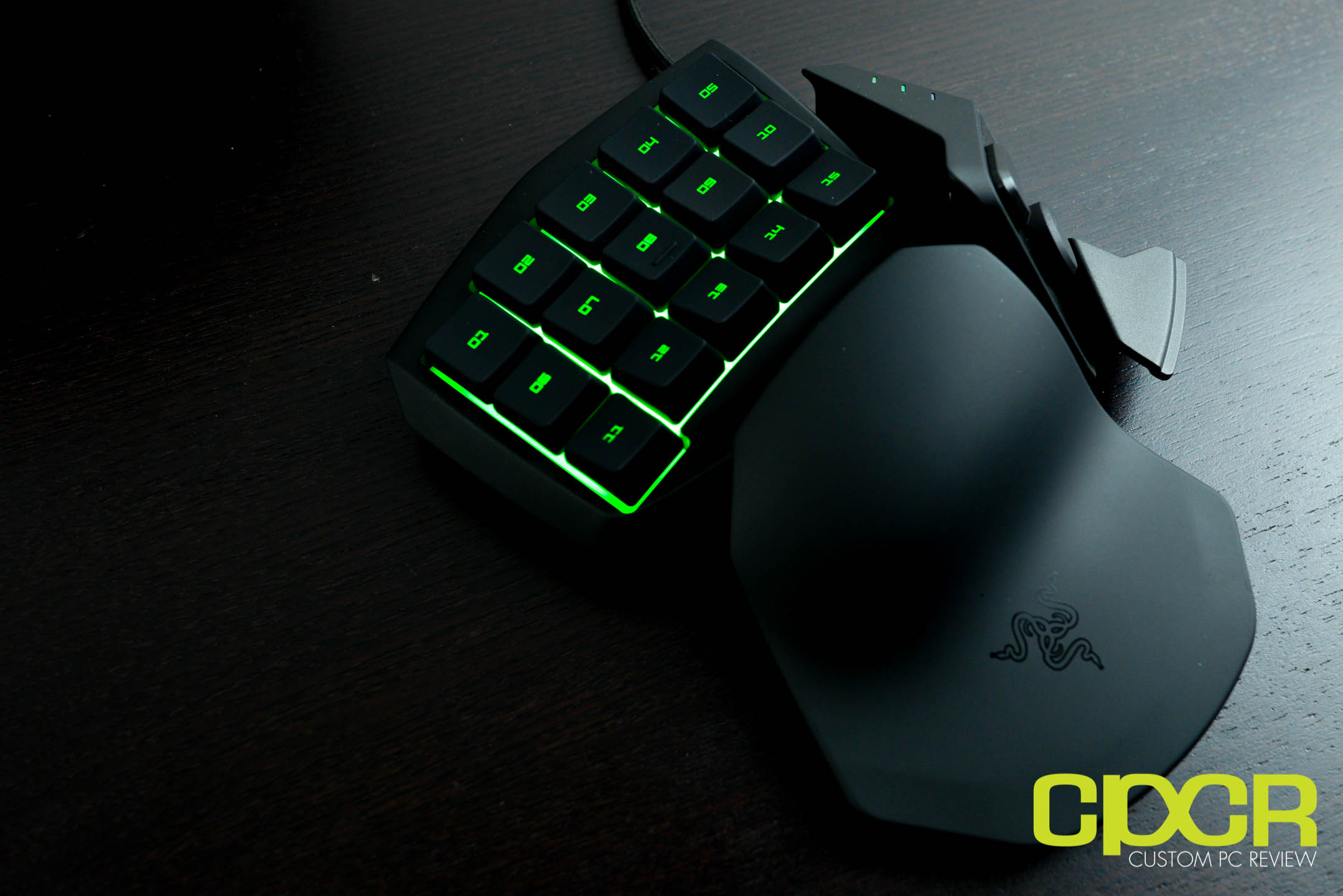[section label=1. Introduction]
Client PCIe SSD’s Comeback
Over the past year or so, it’s been no secret that OCZ has had a bit of a rough time in the market, but with the sale of their company to Toshiba late last year, OCZ has quickly been turning themselves around with several new product introductions to complete their transition from the old OCZ Technology Group to the new OCZ Storage Solutions, a Toshiba Group Company.
As a part of their transition, OCZ has been revamping their entire product stack to utilize parent company Toshiba’s NAND. By doing so, this will not only allow OCZ to put top quality NAND in their SSDs, but also provides OCZ with better cost efficiency.
Back in late 2013, OCZ began their transition to Toshiba NAND with the introduction of the Vector 150. This was then followed by the move to Toshiba NAND with the OCZ Vertex 460, which was released back in January making both OCZ flagship SATA drives based on Toshiba flash. This then leaves the RevoDrive series which not only needed to be converted to the new flash, but also needed an update as well, given the fact that the last generation RevoDrive was introduced sometime in 2011.
As such, OCZ recently unveiled their latest introduction into the PCIe SSD market, the OCZ RevoDrive 350, which we’ll be reviewing today.
OCZ RevoDrive 350 Specifications
| Manufacturer | OCZ | OCZ | OCZ |
|---|---|---|---|
| Model | RevoDrive 350 | RevoDrive 350 | RevoDrive 350 |
| Form Factor | Full Height, Half Length PCIe | Full Height, Half Length PCIe | Full Height, Half Length PCIe |
| Capacity | 240GB | 480GB | 960GB |
| Controller | 2x LSI SandForce SF-2282 /w VCA 2.0 | 4x LSI SandForce SF-2282 /w VCA 2.0 | 4x LSI SandForce SF-2282 /w VCA 2.0 |
| NAND | Toshiba 19nm 2nd Gen Toggle Mode MLC | Toshiba 19nm 2nd Gen Toggle Mode MLC | Toshiba 19nm 2nd Gen Toggle Mode MLC |
| Sequential Reads | 1000 MB/s | 1800 MB/s | 1800 MB/s |
| Sequential Writes | 950 MB/s | 1700 MB/s | 1700 MB/s |
| 4K Random Read | 45,000 IOPS | 90,000 IOPS | 135,000 IOPS |
| 4K Random Write | 80,000 IOPS | 140,000 IOPS | 140,000 IOPS |
| Interface | PCIe Gen 2 x8 | PCIe Gen 2 x8 | PCIe Gen 2 x8 |
| Warranty | 3 Years, 50GB/day | 3 Years, 50GB/day | 3 Years, 50GB/day |
The OCZ RevoDrive 350 is a full height, half length PCIe SSD which will be available in capacities of 240GB, 480GB and 960GB. The drive will be powered by either 2x LSI SandForce SF-2282 controllers for the 240GB model, or 4x LSI SandForce SF-2282 controllers for the 480GB and 960GB models for maximum performance of up to 1,800MB/s reads and 1,700MB/s writes.
Since the controllers aren’t designed to interface with each other natively, they’re aggregated using OCZ’s onboard ICT-2062 SuperScale storage controller (SCSI RAID controller) along with OCZ’s VCA (Virtualized Controller Architecture) 2.0, which we’ll discuss in a bit. The new RevoDrive 350 also includes an upgraded PCIe Gen 2 x8 interface from the older PCIe Gen 2 x4 interface on the previous generation RevoDrives.
Like last generation RevoDrives, the RevoDrive 350 will be bootable via PCIe and new for this generation is Linux support, which should be a huge win for those planning to use the RevoDrive 350 in some sort of server configuration.
If that sounds pretty exciting, let’s take a closer look at the drive!
[section label=2. A Closer Look]
A Closer Look at the OCZ RevoDrive 350 480GB
Here’s a look at the packaging for the OCZ RevoDrive 350 480GB PCIe SSD.
Included, we get a driver/utility disk and the shiny new OCZ RevoDrive 350 480GB. Those planning on booting from the RevoDrive 350 will need to use the drivers on the disk for the Windows installation process to detect the drive.
Here’s a closer look at the OCZ RevoDrive 350. The drive comes in a half length, full height PCIe form factor with a PCIe Gen 2 x8 connector. Unlike older RevoDrives, the entire length of the RevoDrive 350 is covered with a large metal casing which not only makes the drive look pretty cool, but also acts as a heatsink for the onboard OCZ ICT-0183 SuperScale processor which powers VCA 2.0.
Despite our sample being only the 480GB model, we can see that the entire PCB is filled to the brim – front and back. This is actually a slightly more efficient design than the older RevoDrive 3 X2 which needed a separate riser PCB for larger capacity drives.
Right off the bat, we can also see that the PCB is split into four separate partitions with each partition containing its own controller and eight packages of NAND.
Interestingly, rather than introducing a new RevoDrive built fully in-house, the OCZ RevoDrive 350 480GB is powered by a combination of 4x LSI SandForce SF-2282 controllers along with an in-house ICT-0262 SuperScale storage processor. While OCZ has been transitioning most of their SATA SSDs to in-house Indilinx controllers, the choice to go SandForce with the RevoDrive was most likely due cost and time to market, allowing OCZ to revamp the product stack to quickly take advantage of Toshiba NAND.
Sitting between the RevoDrive 350 and the host system is OCZ’s VCA (Virtualized Controller Architecture) 2.0 virtualization layer. As its name suggests, VCA 2.0 acts as a RAID controller and aggregates the performance of the four separate drives on the RevoDrive 350 into what appears to be a single drive for the host. What’s interesting about VCA is that it doesn’t stripe data like a typical RAID-0 array. Instead, VCA acts more like a JBOD array in that it dispatches requests to each individual controller in parallel. VCA then takes care of load balancing to ensure even wear leveling, redundancy, and passing commands such as secure erase, TRIM, S.M.A.R.T. health monitoring, etc. to each drive.
As expected, the OCZ RevoDrive 350 is now powered by Toshiba’s 2nd Generation 19nm Toggle Mode MLC NAND. Our 480GB model included a staggering 32 NAND packages for a total of 512GiB.
[section label=3. Test Setup]
Haswell Test Bench
As of October 5, 2013, we’ve upgraded our storage testing system to a Z87/Haswell testing platform. All SSDs used for comparison here have been updated to the latest firmware as of October 2013. Performance tests from storage reviews prior to that date should not be compared to our latest reviews.
| System | CyberPowerPC Gamer Xtreme 4200 |
|---|---|
| CPU | Intel Core i7 4770K |
| Motherboard | ASUS Z87-A |
| Memory | Kingston HyperX Genesis 16GB DDR3 2133MHz |
| Graphics | Intel HD4600 Graphics |
| Storage | OCZ Vertex 4 256GB |
| Power Supply | Corsair HX650 |
| Case | HSPC High Speed Tech Station |
| Optical Drive | ASUS OEM DVD Drive |
| Operating System | Windows 8 64 bit & CentOS 6.4 |
Special thanks to CyberPowerPC, Kingston, OCZ Technology and HSPC for sponsoring our test bench!
Crystal Disk Info
OCZ RevoDrive 350 480GB
Today we’ll be reviewing the OCZ RevoDrive 350 480GB PCIe SSD with firmware version 2.50. Thanks to VCA 2.0, the four “drives” onboard are aggregated into a single drive, and we can see that it supports S.M.A.R.T., APM (Advanced Power Management), NCQ (Native Command Queueing), and TRIM.
[section label=4. ATTO Disk Benchmark / AS SSD / Crystal Disk Mark]
OCZ RevoDrive 350 480GB Performance
ATTO Disk Benchmark v2.46
ATTO Disk Benchmark is one of the industry’s oldest and most popular benchmarks for testing disk read/write speeds. This benchmarks allows read and write testing using predefined block sizes and gives us a good idea of read/write speeds with different sized files. Most SSD manufacturers prefer using this benchmark when advertising SSDs as it tests using compressible data, which tends to yield best performance.
Performance Analysis
Here’s a quick first look at the performance of the OCZ RevoDrive 350 480GB. At 2GB/s sequential reads and 1.9GB/s sequential writes, I think it’s safe to say that the RevoDrive 350 is probably the fastest SSD we’ve tested to date.
AS SSD Benchmark
AS SSD is a very commonly used benchmark used to measure SSD performance in a number of categories. Here, tests are run using incompressible data at QD1. It also outputs a final score at the conclusion of the test based off the read and write performance of the drive.
Performance Analysis
At QD1, the RevoDrive 350’s performance is once again quite good. Sequential reads topped the charts at 1,753MB/s and sequential writes were able to reach a respectable 855MB/s. Since we’re dealing with a SandForce based drive, we can see in the AS SSD compression benchmark that performance improves dramatically as data becomes increasingly compressible.
Crystal Disk Mark 3.0.1 x64
Crystal Disk Mark is another popular benchmark which allows us to measure both sequential read/write speeds as well as random read/write speeds. With this benchmark, tests can be run using both random fill (incompressible data) and 0 fill (compressible data). Realistically in typical computer usage scenarios, data being transferred will consist of a mixture of both incompressible and compressible data.
Performance Analysis
Crystal Disk Mark performance was once again quite solid with read performance of 1479MB/s and write performance of 1325MB/s with fully compressible data. Moving to incompressible data, performance was slightly lower coming in at 1397MB/s sequential reads and 698MB/s sequential writes. 512K and 4K QD32 performance figures were quite good as well suggesting that the RevoDrive 350 performs best with either large block or high queue depth operations.
[section label=5. PC Mark 7 / PC Mark 8]
OCZ RevoDrive 350 480GB Performance
PC Mark 7 Storage Benchmark
The PC Mark 7 storage benchmark evaluates the SSD under many different real world environments such as gaming, multimedia editing, etc. This closely represents the SSD’s performance under real world situations.
PC Mark 8 Expanded Storage Benchmark
With the introduction of PC Mark 8 2.0.228, Futuremark added the option for an Expanded Storage Benchmark which is literally designed to bring any storage system its absolute limits. The new PC Mark 8 Expanded Storage Benchmark takes around 24 hours to run and for our purposes, we’ll be using the consistency test which measures performance consistency, degradation tendency, and recovery speed of a storage system.
Consistency Test
Full details on the consistency test can be found in the PC Mark 8 Technical Guide here. For the more simplified version, the test is basically a near 24 hour, five phase benchmark – three of which we’ll be reporting on in our results below.
- Phase 1 is a precondition phase designed to “dirty” the drive with random data. The entire drive is filled twice to the capacity of the drive.
- Phase 2 is a degrade phase where the drive is hammered with tons of random data followed by a performance test run. This is done 8 times.
- Phase 3 is the steady state phase where the drive is once again hammered with tons of random data followed by a performance test run. This is done 5 times.
- Phase 4 is the recovery phase where the drive is given 5 minutes to rest followed by a performance test run. This is done 5 times.
- Phase 5 is the clean up phase where the drive is simply secure erased.
Performance Analysis
In PC Mark 7, the OCZ RevoDrive 350 performed quite well, shooting itself to the top of the pack as the fastest drive we’ve tested. Moving into the new PC Mark 8 Expanded Storage Benchmark, the OCZ RevoDrive 350 still did quite well against the drives tested although it was slightly beat by its SATA based cousin, the OCZ Vertex 460. This is due to the fact that the RevoDrive 350 is built for large block, high queue depth operations rather than typical consumer workloads that include mostly small block and low queue depth operations.
[section label=6. FIO – FOB]
OCZ RevoDrive 350 480GB Performance
FIO (Flexible I/O Tester)
FIO, which stands for Flexible I/O Tester, is basically what its name says – a flexible I/O tester / I/O workload generator. Whereas all the benchmarking tools we’ve used previously are fantastic, easy to use benchmarking tools that provide a good snapshot of SSD performance, they do lack a lot of versatility, especially for more complex and in-depth operations such as custom queue depths, block sizes, test run times, etc. While the testing that follows may not pertain to typical consumer usage, they do help give us a much more in-depth look at each individual product’s strengths and weaknesses when they’re pushed to the limits.
FIO – FOB (Fresh Out of the Box) Testing
When SSDs are brand new and Fresh Out of the Box, they’re generally able to perform at or outperform their advertised speeds, but unlike traditional hard drives, performance on SSDs begin to degrade over time as they become more and more used. This is because while SSDs are new, all bits on the SSD are empty, so they can instantly be programmed with data. However, once data gets programmed in, even if it’s deleted in the filesystem the actual data will still stay programmed on the NAND itself unless some sort of garbage collection routine comes in to wipe the data. Unfortunately, in order to write new data onto “dirty” NAND, the NAND needs to go first through an erase cycle to erase the old data before a program cycle can happen to program new data, which as you may imagine takes more time than just a simple program cycle. As this only happens when writing new data onto the SSD, you’ll generally see less performance degradation on reads and more performance degradation on writes.
For our FOB testing, we run a secure erase on the SSD then run each test sans any preconditioning. This will provide us with the highest level of performance the SSD is capable of and is likely never to be seen ever again once the SSD goes into a used state.
Our testing will include 4K read testing, 4K write testing, and 4K 70/30 read/write mix testing at queue depths of 1,2,4,8,16,32,64,128,256. The reason we’ve also included 4K 70/30 read/write mix testing is simply because most real world workloads will always fall somewhere between 0% write and 100% write rather than one or the other. Since client usage is much more read heavy, we’ll be using the 70/30 read/write mix.
For general client usage, performance will fall somewhere between queue depths of 1-4 whereas servers and other enterprise applications will easily see queue depths of 32 or greater.
Performance Analysis
Here’s where the RevoDrive 350 truly shines. With FIO loading up the drive to its full potential, the OCZ RevoDrive 350 is exceedingly quick, scaling extremely well to high queue depth operations. At queue depth 256, the RevoDrive 350 was able to pull an astonishing 294,794 IOPS – three times more than the fastest SATA based SSD on the market. Similarly, 4K random writes were quick as well, with the drive pulling a maximum of 142,000 IOPS at QD16 before leveling off at 84,000 mark at QD64, QD128, and QD256. Mixed workload performance wasn’t slow either and after QD32, the drive was able to pull a maximum 170,000 IOPS at QD256.
[section label=7. FIO – Steady State]
OCZ RevoDrive 350 480GB Performance
FIO – Steady State Testing
After prolonged use of an SSD, it will reach “steady state” where performance levels off to a minimum level. The FOB state is the “best case scenario” for SSD performance while “steady state” is going to be your worst. Here, we ran the exact same set of benchmarks we just completed in the FOB state; except this time around, we’ll be preconditioning the drive by filling 100% of the drive’s LBAs with two sequential passes of 128k data followed by hammering the drive for six hours with 4K random data prior to actual testing.
Performance Analysis
While fresh out of the box performance was good, steady state performance was probably more impressive. At higher queue depths, the OCZ RevoDrive 350 was only slightly short of 100,000 IOPS 4K random reads while while 4K random writes blew past the competition at just over 81,000 IOPS. Mixed workload performance was extremely impressive as well once we reached higher queue depths with the drive pulling a maximum 85,000 IOPS at QD128.
[section label=”8. FIO – 4K Random Write Consistency”]
OCZ RevoDrive 350 480GB Performance
FIO 4K Random Write Consistency Testing
Another one of the benefits of testing with FIO is the flexibility of running consistency tests, which is one of the most important metrics when considering SSDs going forward. Looking at the results of our benchmarks such as ATTO Disk Benchmark and Crystal Disk Benchmark, we can see that practically every top tier SSD is capable of saturating SATA 6Gb/s in the FOB state. However, what really differentiates these SSDs is their ability to hold a certain level of performance even after extended periods of use.
For our consistency testing, we used a fairly standard method, which includes both filling up 75% of capacity as well as 100% capacity twice with sequential 128k data followed by the actual test itself, which is simply running 4K random writes at a queue depth of 32. By recording the IOPS every second for 2,000 seconds, we’re able to get a good look at what kind of performance can be expected when the drive is relatively new, when it’s heading towards steady state, and when it’s actually in steady state.
[tabgroup]
[/tabgroup]Performance Analysis
SandForce based drives have always been excellent performers when it comes to 4K write consistency and with the OCZ RevoDrive 350 480GB being based off four of them, I’d say write consistency is probably the best we’ve seen to date from a client oriented drive. Once the RevoDrive 350 entered steady state, it proved to be extremely consistent, keeping performance between 82,000 and 85,000 IOPS throughout our entire 2,000 second test. What was more surprising was the fact that the drive was able to maintain near identical performance at both 75% and 100% fill.
[section label=”9. FIO – 4K Random Write Latency”]
OCZ RevoDrive 350 480GB Performance
FIO 4K Random Write Latency Testing
Another metric that’s becoming increasingly important in SSDs is its ability to keep latency low despite being subjected to a heavy workload. Even if a SSD were capable of ultra high and ultra consistent IOPS performance, if latency were high, users would still feel that the drive is slow. Ideally, SATA SSDs should always be capable of latencies under 50ms, even during heavy workloads.
For latency testing, we’ll be using the exact same testing parameters as IOPS consistency testing, except instead of recording IOPS every second, we’ll be recording latency.
[tabgroup]
[/tabgroup]Performance Analysis
While 4K write IOPS consistency was impressive, 4K write latency was probably more impressive. In our entire 2,000 second test, the RevoDrive 350 managed to keep latency not only consistent, but also at sub-0.5ms, which is the best we’ve seen from any SSD, including enterprise SATA SSDs.
[section label=”10. FIO – 128K Random Write”]
OCZ RevoDrive 350 480GB Performance
FIO 128K Random Write Consistency Testing
In addition to testing 4K random write consistency, we’ll also begin to test for 128K random write consistency to see how well a SSD is able to hold itself to a level of performance when getting hammered with larger file transfers.
For 128K random write consistency testing, we won’t be preconditioning the drive with two sequential passes of 128K data like in our 4K random write consistency testing since 128K data can easily fill up the drive well within our 2,000 second run.
[tabgroup]
[/tabgroup]Performance Analysis
Although 4K random writes were the fastest, most consistent I’ve seen to date, 128K random writes were a slightly different story. While OCZ got the performance part of it down, the drive was fairly inconsistent when it came to larger block transfers. Steady state performance at 100% fill ranged from 600MB/s way up to 1,200MB/s while steady state performance at 75% fill ranged from 700MB/s up to 1,300MB/s. While inconsistent, you do have to give the RevoDrive 350 a ton of credit for being able to do even 600MB/s in steady state. This is a phenomenal feat given that no SATA based drive tested today was capable of exceeding even 300MB/s in steady state.
[section label=11. Conclusion]
OCZ RevoDrive 350 480GB Conclusions
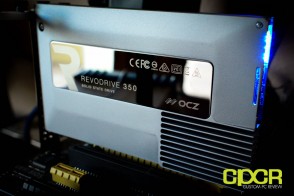 Looking at OCZ’s lineup today, it’s become quite apparent that OCZ is looking to position themselves as a manufacturer of high end enthusiast and enterprise SSDs, and with their Vertex, Vector and RevoDrive lines in place in the client side, OCZ has a fairly strong lineup to compete in the segment going forward as well. With that said, let’s talk about the RevoDrive 350.
Looking at OCZ’s lineup today, it’s become quite apparent that OCZ is looking to position themselves as a manufacturer of high end enthusiast and enterprise SSDs, and with their Vertex, Vector and RevoDrive lines in place in the client side, OCZ has a fairly strong lineup to compete in the segment going forward as well. With that said, let’s talk about the RevoDrive 350.
Starting with performance, performance on the RevoDrive 350 is extremely, extremely good. Let’s get that out of the way. However, as you’ve probably noticed from our testing, it’s only extremely, extremely good when faced with an appropriate workload. For a typical consumer looking to surf the web, play some games, or work on some excel spreadsheets, the OCZ RevoDrive 350 is way overkill. In fact, as illustrated in the PC Mark 7 and PC Mark 8 Expanded Storage Benchmark, the RevoDrive 350 performed similar to an enthusiast SSD such as OCZ’s own Vertex 460 when it comes to a typical consumer workload.
In order to really take advantage of the RevoDrive 350, you’d need to toss it into a server and crank up the I/O requests, or be one of the few people who do work on uncompressed 4K video streams, and need the bit of extra bandwidth the RevoDrive 350 can provide. While OCZ has decided to go to market the RevoDrive 350 as a client oriented drive, its strengths obviously lie in the enterprise and I’m sure plenty of servers will be rocking the new drive as a cheap application accelerator or something of that nature.
| Manufacturer | OCZ Storage Solutions | OCZ Storage Solutions | OCZ Storage Solutions |
|---|---|---|---|
| Model | RevoDrive 350 | RevoDrive 350 | RevoDrive 350 |
| Capacity | 240 GB | 480 GB | 960 GB |
| Street Price | $529.99 | $829.99 | $1,299.99 |
| Price/GB | ~$2.21 | ~$1.73 | ~$1.35 |
| Check Price | Click Here | Click Here | Click Here |
The OCZ RevoDrive 350 480GB can be found at various online e-tailers for around $829.99, which translates to ~$1.73/GB. While it’s ~2-3x more expensive than a typical SATA based client SSD, it’s not really an apples to apples comparison considering the RevoDrive 350 has four SSD controllers, 32 NAND packages, and an additional onboard storage controller to tie the whole package together. It’s simply more parts, more complexity, and in turn, more expensive. Luckily for those who need extra speed for large block transfers or high queue depth operations, there’s no PCIe solution out there that can deliver this level of performance at under $2/GB. It just doesn’t exist… yet.
Warranty on the OCZ RevoDrive 350 is a standard 3 years, but you do get 50GB/day which is very respectable for a client drive. Personally I’d like to see a 5 year warranty on the RevoDrive 350, especially since OCZ’s client oriented Vector features a 5 year warranty, but given the fact that OCZ’s enterprise Z-Drive 4500 PCIe SSD also features a 5-year warranty, and they’re based on a similar design, it’d probably be a bad idea to cannibalize sales on your own high margin enterprise products.
Overall, the OCZ RevoDrive 350 is an phenomenal, high performance PCIe SSD designed for users looking for RAID-0 like SSD performance without having to deal with the troubles of a RAID array. Those with appropriate workloads that can fully take advantage of the RevoDrive 350 will be nothing short of impressed with its performance.
Sample provided by: OCZ Storage Solutions
Availability: Amazon

